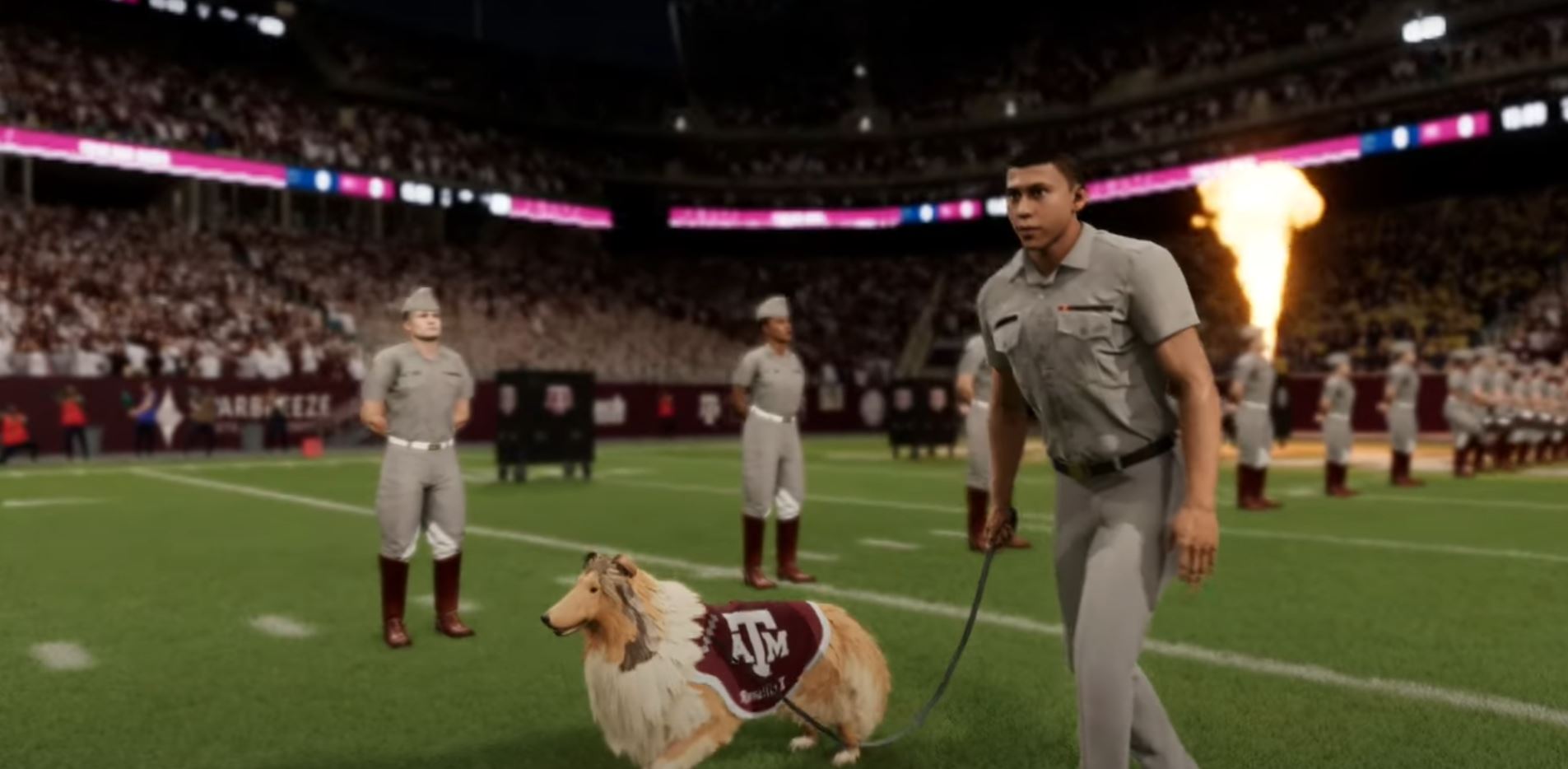
EA Sports College Football 25 is essentially the revival of the beloved NCAA Football franchise. While many things have changed in the years since that series’ heyday, quite a few legacy features have returned. That includes an expanded Homefield Advantage mechanic that determines the toughest places to play in the game.
As in years past, the Homefield Advantage mechanic is designed to recreate the experience of playing on the road in college football’s loudest and most intimidating stadiums. That digital crowd noise is translated into gameplay disadvantages for the visiting team that include blurred receiver routes and decreased player confidence ratings. It’s an incredible concept that elevates road games and taps into some of the things that make college football (and College Football 25) unique.
The big catch is that not every stadium is created equally. EA Sports College Football 25 includes a ranking system that determines how tough a stadium is to play in relative to every other stadium in the game. Well, since those rankings were released, the reactions to them have been…mixed. “Anger” is too strong of a word, but most analysts who track the real-life version of this subject disagree quite a bit with the in-game stadium rankings. A closer look at those rankings reveals that they’re not necessarily bad, but they are certainly confusing.
EA College Football 25 Toughest Places to Play Rankings
Ahead of the release of EA Sports College Football 25, the developers shared the rankings of the toughest road game stadiums in the game. While these rankings are subject to change in future updates, here is where they stand at launch:
1. Kyle Field – Texas A&M
2. Bryant-Denny Stadium – Alabama
3. Tiger Stadium – LSU
4. Ohio Stadium – Ohio State
5. Sanford Stadium – Georgia
6. Beaver Stadium – Penn State
7. Camp Randall Stadium – Wisconsin
8. Gaylord Family Oklahoma Memorial Stadium – Oklahoma
9. Doak S. Campbell Stadium – Florida State
10. Ben Hill Griffin Stadium – Florida
11. Autzen Stadium – Oregon
12. Memorial Stadium – Clemson
13. Neyland Stadium – Tennessee
14. Jordan-Hare Stadium – Auburn
15. Williams-Brice Stadium – South Carolina
16. Michigan Stadium – Michigan
17. Lane Stadium – Virginia Tech
18. Rice-Eccles Stadium – Utah
19. Darrell K. Royal-Texas Memorial Stadium – Texas
20. Kinnick Stadium – Iowa
21. Notre Dame Stadium – Notre Dame
22. Spartan Stadium – Michigan State
23. Donald W. Reynolds Razorback Stadium – Arkansas
24. Albertsons Stadium – Boise State
25. Davis Wade Stadium – Mississippi State
Just as important as the actual rankings rankings is the criteria used to determine those rankings. According to the EA Sports College Football 25 team, the current Homefield Advantage rankings are primarily based on:
– Home Winning Percentage
– Home Game Attendance
– Active Home Winning Streaks
– Team Prestige
– Additional, Undisclosed Factors
In other words, the more successful a team has been at home for a long period of time, the bigger advantage they typically have. From there, the rankings were determined by things like a program’s historical intimidation factor, the decibel noise in the stadium itself, average attendance, and other, largely undisclosed qualifications that seem to fall under the category of “vibes.”
On paper, it’s a pretty good system. In reality, the final rankings raise a series of unanswered questions that start at the top of the list.
EA Sports College Football 25: Why Is Kyle Field the Toughest Place to Play?
The biggest reason why Kyle Field is the toughest place to play in EA Sports College Football 25 is the legacy and influence of Texas A&M’s “12th Man.” Essentially, the Kyle Field crowd has historically been considered A&M’s 12th player on the field due to the noise they generate and their ability to influence a game through their presence and actions.
Though the 12th Man idea has been borrowed and modified by other teams over the years, Kyle Field remains a uniquely intimidating venue. The stadium (specifically, the press boxes) has even been known to shake as a result of the crowd’s synchronized movements and ability to generate an almost endless stream of noise throughout every game. Mind you, Kyle Field is also one of the largest venues in college football (102,000+ capacity) which makes the ferociousness of its sometimes coordinated crowd that much more intimidating.
While Kyle Field undoubtedly deserves one of the top spots on this list, its place at the very top of the rankings does call into question the specifics of EA Sports College Football 25‘s home-field advantage ranking system.
For instance, Texas A&M is not even a top-15 team in the game at this time, and their home record in recent years isn’t even as good as some of the other teams in their conference. A&M certainly checks most of the outlined boxes for these rankings, but they don’t find themselves atop those metrics that can objectively be measured. That strongly suggests that these rankings were influenced by those vague vibe categories as much (if not more than) the outlined criteria.
That’s not necessarily a bad decision, but it does lead to some inconsistencies. For instance, the general consensus at the moment is that LSU’s Tiger Stadium is the toughest place to play on the road in all of college football. It also has as much (if not more) of a historical legacy as Kyle Field, and LSU is currently considered to be one of the best teams in the game. So while number three overall is hardly an insult, it’s still a somewhat shocking result given the supposed nature of this ranking system.
Similarly, Michigan, Tennessee, Notre Dame, and Oregon should all be ranked much higher than they currently are based on the known ranking metrics. By comparison, Georgia’s high ranking seems to be more representative of their current powerhouse status and recent home record than the intangibles that seemingly elevated Kyle Field to the top of the list.
Ultimately, these rankings are not bad by any means, but they are inconsistent and seem to be invisibly influenced by game balance decisions and personal preferences more than you might initially think. Regardless, getting a win on the road in any of those top five places (especially at higher difficulty settings) is going to be a nightmare.
The post EA Sports College Football 25’s Toughest Places To Play Rankings Are Confusing NCAA Fans appeared first on Den of Geek.






